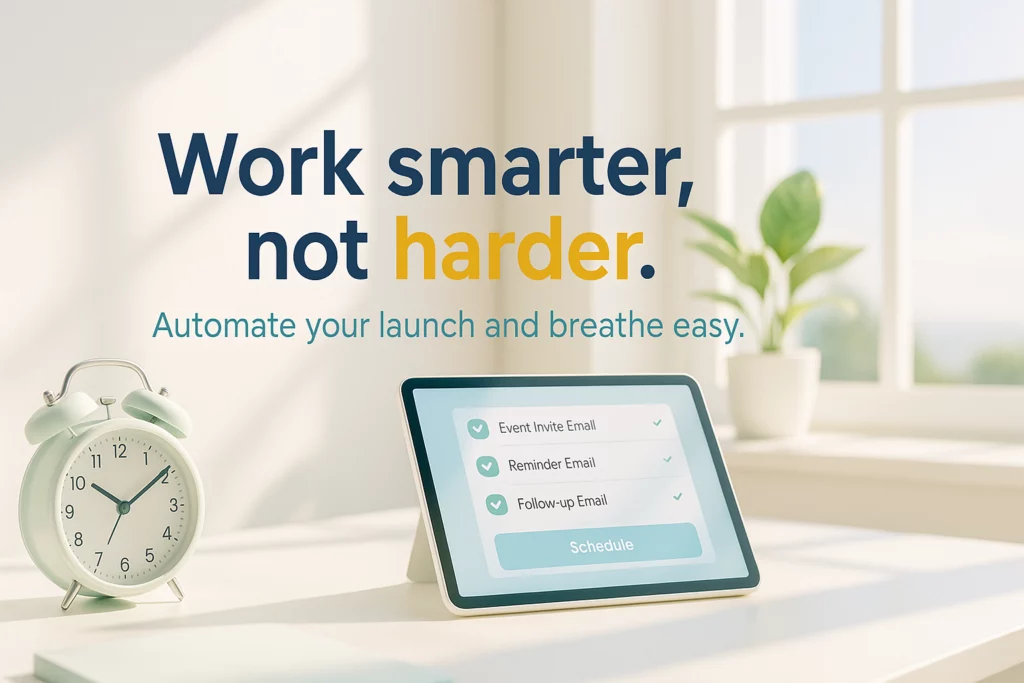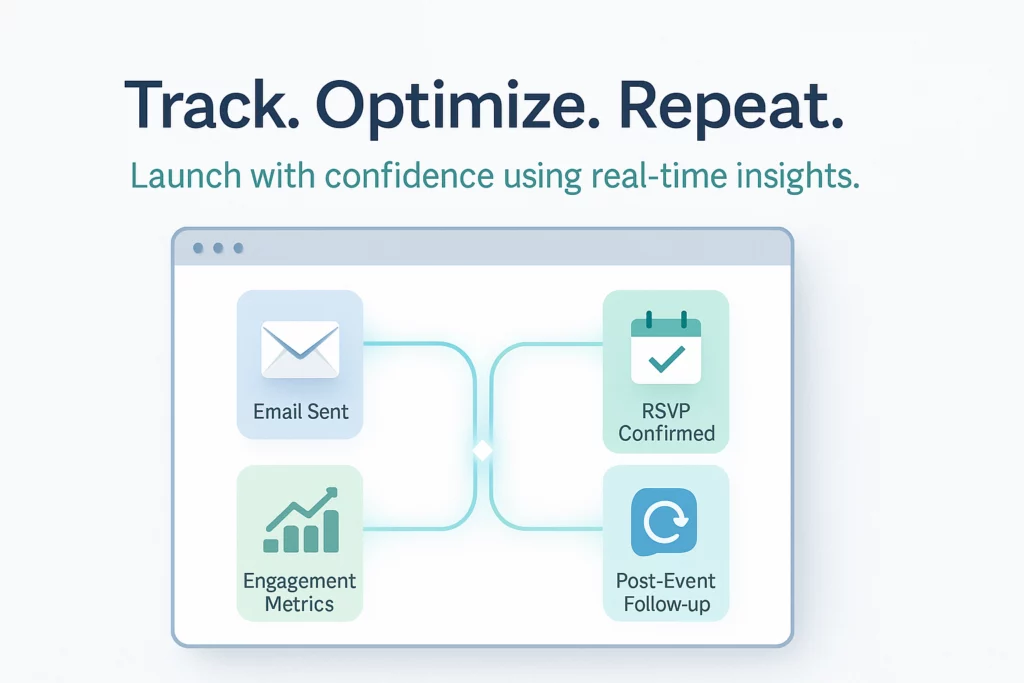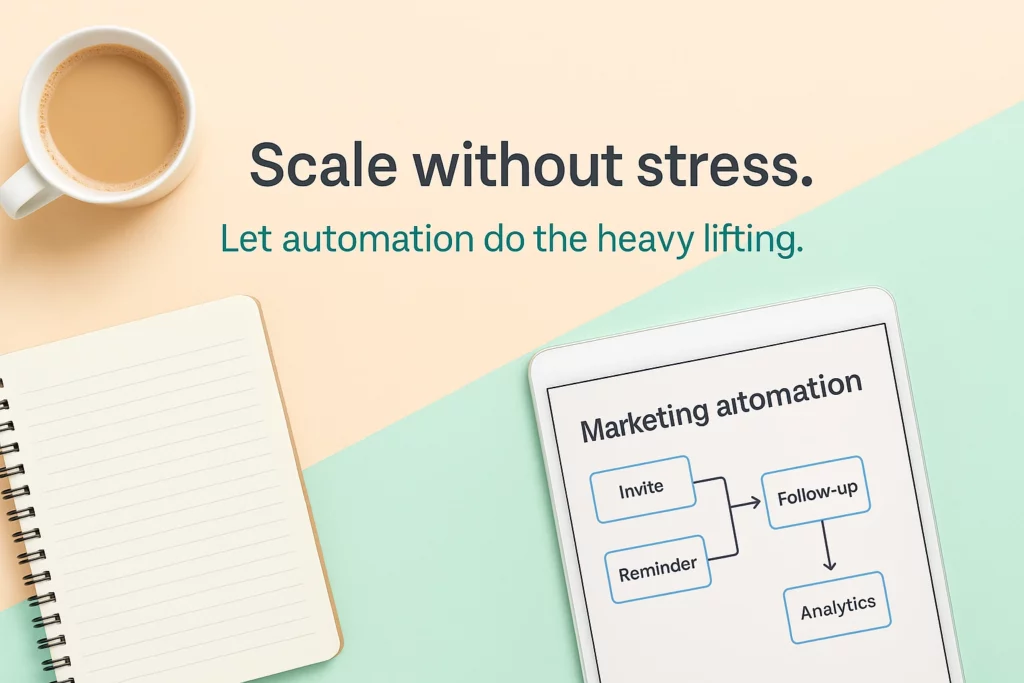Product Events Marketing Automation: The Secret to Stress-Free, Scalable Launches
Discover how product events marketing automation can turn chaos into calm and drive serious growth.
Launching a new product should be exciting. It’s the moment you and your team have worked tirelessly for. But let’s be honest: most product events feel more like juggling flaming swords than celebrating a milestone. From coordinating teams and sending invites to tracking attendance and managing follow-ups, it can feel like your sanity is hanging by a thread.
What if we told you there’s a way to make product launches not only easier, but smarter, faster, and more successful? Say hello to product events marketing automation — your new best friend in the chaotic world of go-to-market strategies.

Why Product Events Often Feel Like a War Zone
You know the drill. A new feature rolls out, or a full-blown product hits the market. Cue the endless checklists: email campaigns, webinar setup, landing page tweaks, internal comms, influencer outreach, post-event surveys…
It’s not just the workload; it’s the complexity. One missed email, one untracked signup, one broken integration, and suddenly your smooth event feels like a house of cards.
Here’s where product events marketing automation steps in like a calm, collected event planner who never forgets a thing.
What Is Product Events Marketing Automation?
At its core, product events marketing automation means using tech to manage and automate the entire lifecycle of your product launch events. From pre-launch hype to post-event follow-ups, automation ensures nothing falls through the cracks.
Think of it like this: instead of manually sending invitations, reminders, and thank-you notes, automation platforms handle it for you — triggered by user behavior, time zones, or engagement levels.
Automation tools can:
- Automatically segment and invite relevant leads or users
- Trigger personalized reminders based on user action
- Sync attendee data with your CRM
- Schedule follow-up emails and content based on event behavior
- Measure and report on event ROI in real-time
The Emotional Payoff: Why It Matters
You’re not just streamlining operations here. You’re reclaiming your time, sanity, and creative energy.
Instead of being stuck in spreadsheets or buried in email workflows, you’re free to do the fun, high-impact stuff: crafting killer launch stories, nurturing VIP prospects, building relationships.
Imagine this: You launch your next product. Invitations go out automatically. Registrants receive personalized reminders. Your sales team gets real-time insights. And your follow-up campaigns practically run themselves.
No more scrambling. No more guesswork. Just impact.
The 3 Golden Benefits of Automating Product Launch Events
Let’s break it down even more:
Reach the Right People at the Right Time
Whether you’re targeting press, power users, partners, or your sales team, automation lets you send tailored messages exactly when and where they make sense. No more one-size-fits-all emails. You can use behavioral data, location, and past interactions to send the perfect message at the perfect moment. This level of targeting builds trust and boosts engagement because people receive content that feels relevant and timely. In the long run, it also improves conversion rates by aligning messages with each stage of the buyer’s journey.
Scale Without Breaking a Sweat
Running one webinar is easy. Running ten at once? Not so much. With product events marketing automation, you can scale your efforts without adding more to your plate. Campaign templates, logic-based workflows, and integrations let you go big without burning out. This allows your team to focus on creativity and strategy, rather than being buried in repetitive logistics. It also opens the door to global campaigns that run in multiple time zones without extra stress.
Track, Optimize, Repeat
Data is your superpower. Automation tools let you see exactly what worked, what didn’t, and what to tweak for next time. You get real-time dashboards, heat maps, conversion metrics — the works. So next time you launch, you're not starting from scratch; you’re starting smarter. With these insights, you can A/B test different approaches and double down on the tactics that actually move the needle. It turns every launch into a learning opportunity, fueling continuous improvement.

Real-World Use Cases
- SaaS Product Demos: Trigger demo invites based on signup behavior, and automate follow-ups if they attended (or didn’t).
- Feature Announcements: Launch a mini-event campaign every time a major update drops, with automated workflows for early access users.
- Customer Webinars: Run monthly sessions and automate RSVPs, reminders, and post-webinar content based on attendance.
Tools That Make It Happen
Ready to dive in? Here are some platforms that can power your product events marketing automation:
- HubSpot: Great for automated emails, CRM syncing, and behavior-based workflows.
- Marketo: A favorite for large-scale B2B launches with complex segmentation needs.
- Zapier: Not a full platform, but perfect for connecting your event tools with CRMs, email platforms, and Slack.
- Livestorm / Zoom / ON24: Event platforms with built-in automation capabilities.
And with AI now enhancing many marketing platforms, the potential to optimize event performance grows even further. See how Google AI helps drive ad performance here.
FAQ: Product Events Marketing Automation
Automation ensures that every participant receives timely, relevant communication — from personalized invites to tailored follow-ups. It creates a seamless journey that builds trust and increases engagement. Automated reminders, content delivery, and feedback collection help keep your audience involved and informed throughout the event cycle. This not only improves satisfaction but also boosts your brand perception.
Because there are too many moving parts: teams to align, assets to create, emails to send, platforms to integrate. Without automation, even a small oversight can unravel the entire experience. Coordination gaps and time delays can lead to missed opportunities, poor user experience, or underperformance. Automation helps remove these risks by keeping everything organized and on track.
You can automate webinars, product demos, feature announcements, internal kick-offs, customer appreciation events, and more. Basically, any repeatable event with a digital component. Whether virtual or hybrid, these events benefit from workflows that trigger messages, reminders, follow-ups, and reporting without manual input. This allows you to focus on strategy and engagement instead of repetitive tasks.
Marketing, sales, and customer success teams benefit significantly. Automation helps them stay aligned, act on real-time data, and deliver consistent messaging throughout the buyer's journey. Marketing gets more insights, sales gets better leads, and success teams can nurture relationships more efficiently. Ultimately, it creates a seamless experience from first touchpoint to post-purchase.
Not at all! Startups and mid-sized businesses benefit equally — especially those looking to scale their growth without expanding their headcount. Many automation tools are affordable and designed to grow with your business. With the right setup, even small teams can launch like enterprise giants.

Let Automation Handle the Chaos (So You Can Focus on the Magic)
Marketing is no longer about doing more; it’s about doing it better. With product events marketing automation, you can finally launch products the way you always dreamed: with less friction, more focus, and results that scale.
So next time a product launch is on the horizon, don’t just power through it manually. Automate it. And watch the magic happen.